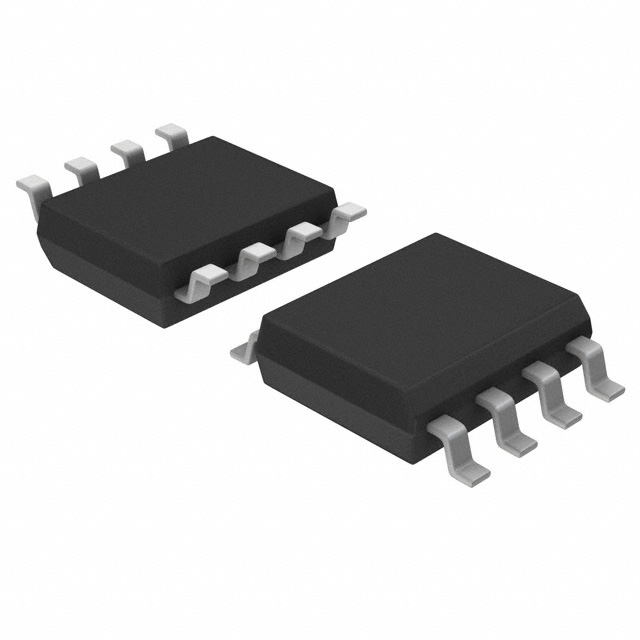Voir les spécifications pour les détails du produit.

TPS54232D - English Editing Encyclopedia Entry
Product Overview
Category
The TPS54232D belongs to the category of integrated circuits (ICs) and specifically falls under the power management ICs.
Use
This IC is primarily used for voltage regulation in various electronic devices and systems. It provides efficient power conversion and control, making it suitable for a wide range of applications.
Characteristics
- High efficiency: The TPS54232D offers high conversion efficiency, minimizing power losses during voltage regulation.
- Wide input voltage range: It can handle a broad range of input voltages, making it versatile for different power supply configurations.
- Adjustable output voltage: The IC allows for adjustable output voltage, providing flexibility in meeting specific system requirements.
- Current protection: It incorporates current protection features to safeguard against overcurrent conditions.
Package and Quantity
The TPS54232D is available in a small outline package (SOP) with eight pins. It is commonly supplied in tape and reel packaging, with a typical quantity of 2500 units per reel.
Specifications
- Input voltage range: 4.5V to 28V
- Output voltage range: 0.8V to 24V
- Maximum output current: 2A
- Switching frequency: 500kHz
- Operating temperature range: -40°C to 125°C
Pin Configuration
The TPS54232D features the following pin configuration:
- VIN: Input voltage pin
- PGND: Power ground pin
- SW: Switching node pin
- FB: Feedback pin for output voltage regulation
- EN: Enable pin for turning the IC on/off
- SS/TR: Soft-start/Tracking pin for controlling startup behavior
- COMP: Compensation pin for stability optimization
- VOUT: Output voltage pin
Functional Features
- High efficiency voltage regulation
- Adjustable output voltage through feedback pin
- Overcurrent protection for enhanced reliability
- Soft-start and tracking functionality for controlled startup behavior
- Stable compensation mechanism for optimized performance
Advantages and Disadvantages
Advantages
- High conversion efficiency reduces power losses
- Wide input voltage range accommodates various power supply configurations
- Adjustable output voltage allows customization for specific system requirements
- Current protection enhances reliability and safeguards against overcurrent conditions
Disadvantages
- Limited maximum output current of 2A may not be suitable for high-power applications
- SOP package may have size limitations for certain designs requiring larger components
Working Principles
The TPS54232D operates based on a switching regulator topology. It utilizes pulse-width modulation (PWM) techniques to regulate the output voltage. The IC converts the input voltage to a high-frequency square wave, which is then filtered and smoothed to provide the desired output voltage.
Detailed Application Field Plans
The TPS54232D finds application in various electronic systems, including but not limited to: 1. Power supplies for computer peripherals 2. Industrial automation equipment 3. Telecommunication devices 4. Consumer electronics 5. Automotive electronics
Detailed Alternative Models
For alternative options, the following models can be considered: 1. TPS54332D: Similar specifications with higher maximum output current (3A) 2. LM2576-ADJ: Non-synchronous buck converter with adjustable output voltage 3. LT8610AB: High-efficiency synchronous buck regulator with wide input voltage range
These alternative models offer different features and specifications, providing flexibility in selecting the most suitable IC for specific applications.
In conclusion, the TPS54232D is a versatile power management IC that offers high efficiency, adjustable output voltage, and current protection. Its compact package and wide input voltage range make it suitable for various electronic systems. However, it has a limited maximum output current and may not be suitable for high-power applications. Alternative models such as TPS54332D, LM2576-ADJ, and LT8610AB provide additional options with different specifications and features.
Énumérez 10 questions et réponses courantes liées à l'application de TPS54232D dans les solutions techniques
Sure! Here are 10 common questions and answers related to the application of TPS54232D in technical solutions:
Q: What is TPS54232D? A: TPS54232D is a synchronous step-down DC-DC converter integrated circuit (IC) that provides high efficiency power conversion for various applications.
Q: What is the input voltage range of TPS54232D? A: The input voltage range of TPS54232D is typically between 4.5V and 28V.
Q: What is the output voltage range of TPS54232D? A: The output voltage range of TPS54232D can be adjusted from 0.8V to 24V.
Q: What is the maximum output current of TPS54232D? A: TPS54232D can deliver a maximum output current of up to 2A.
Q: Is TPS54232D suitable for battery-powered applications? A: Yes, TPS54232D is suitable for battery-powered applications as it has low quiescent current and supports pulse skipping mode for improved efficiency.
Q: Does TPS54232D have built-in protection features? A: Yes, TPS54232D includes various protection features such as thermal shutdown, overcurrent protection, and undervoltage lockout.
Q: Can TPS54232D operate in a wide temperature range? A: Yes, TPS54232D is designed to operate in a temperature range of -40°C to +125°C.
Q: What type of package does TPS54232D come in? A: TPS54232D is available in a small outline integrated circuit (SOIC) package.
Q: Can TPS54232D be used in automotive applications? A: Yes, TPS54232D is suitable for automotive applications as it meets the AEC-Q100 qualification requirements.
Q: Are there any evaluation modules or reference designs available for TPS54232D? A: Yes, Texas Instruments provides evaluation modules and reference designs that can help users quickly prototype and implement TPS54232D in their applications.
Please note that these answers are general and may vary depending on specific application requirements. It is always recommended to refer to the datasheet and application notes provided by the manufacturer for detailed information.

